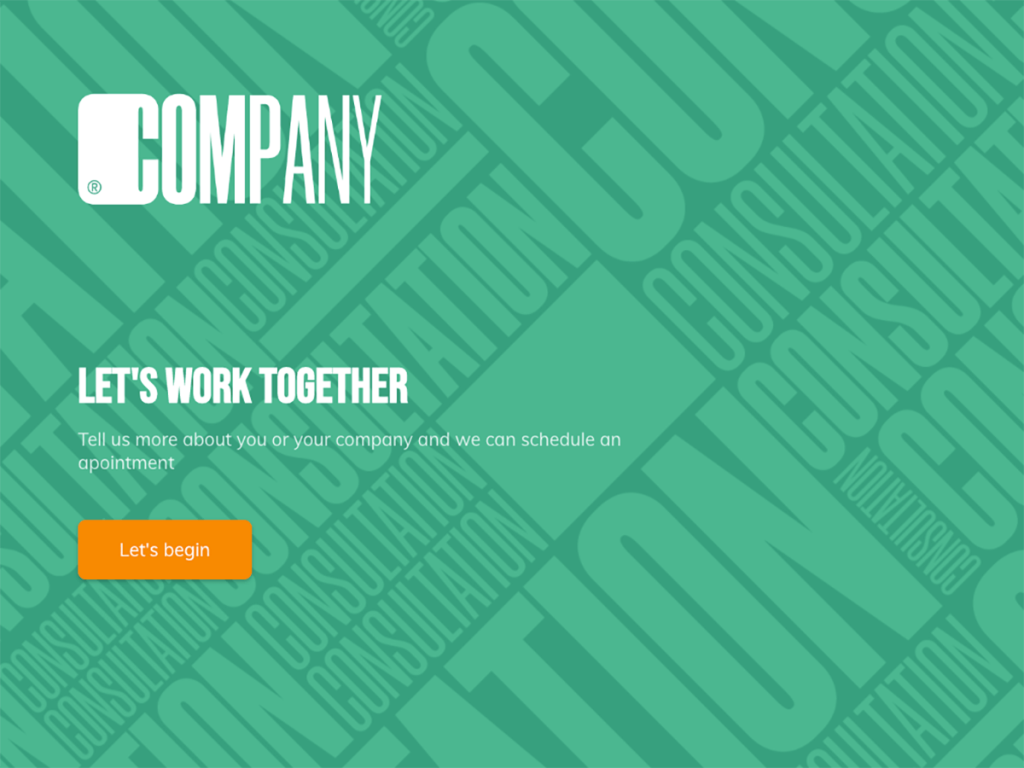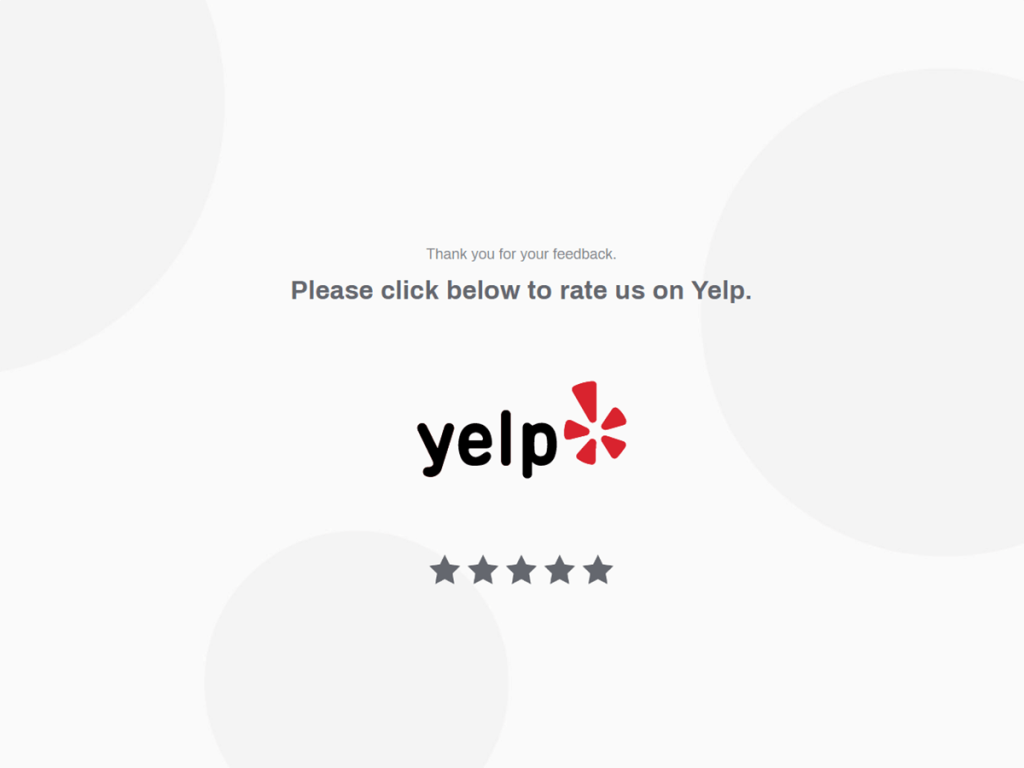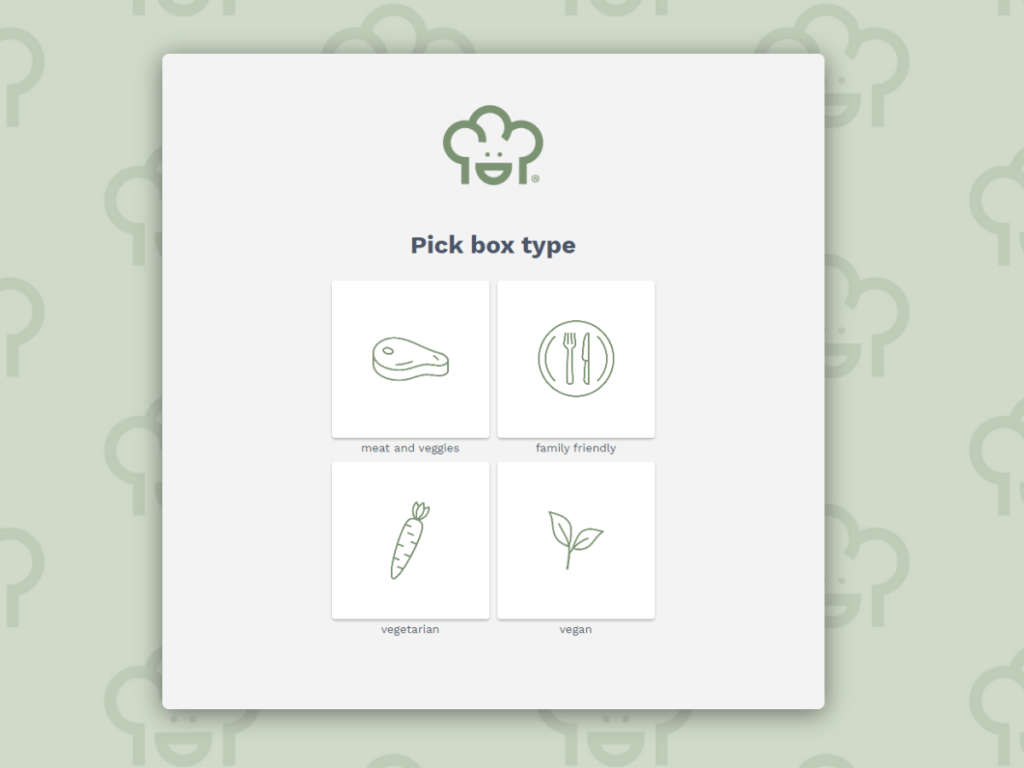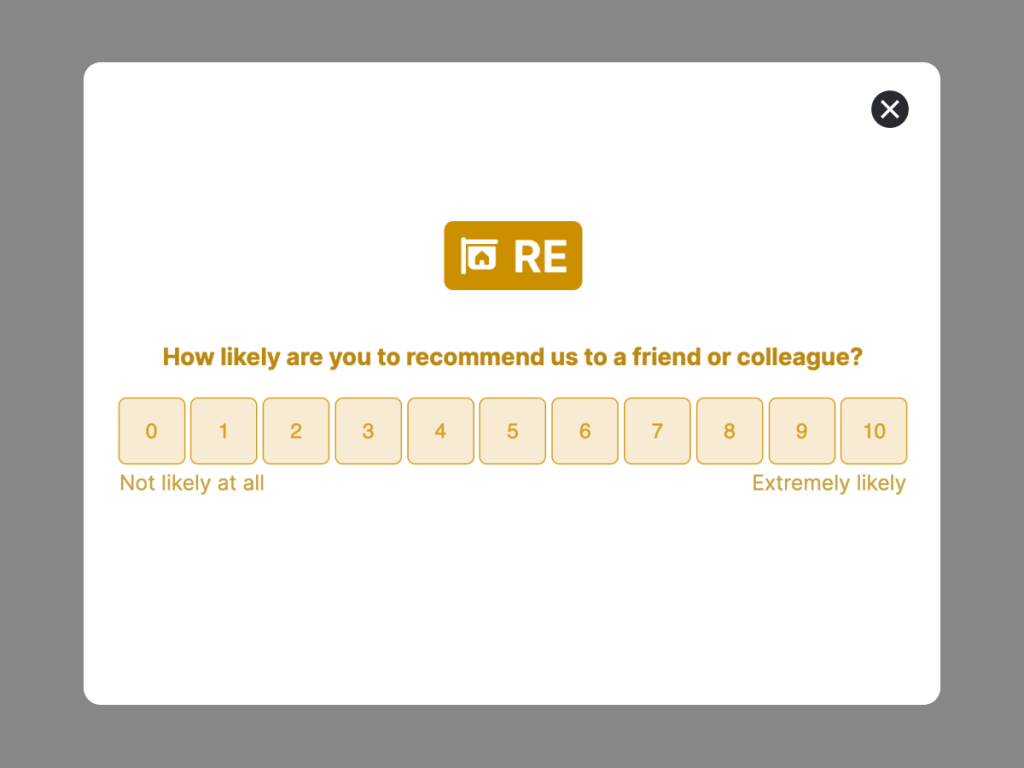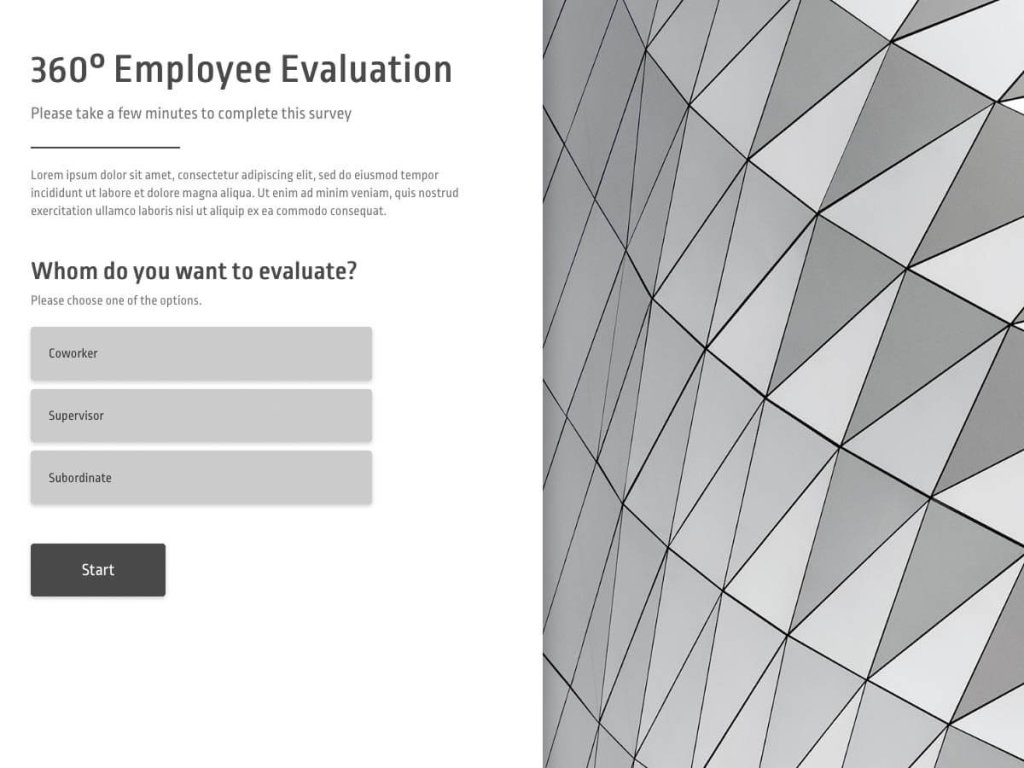Surveys are a tried and true method for gathering feedback from customers. However, simply compiling data from a string of customer-answered questions does not automatically turn it into actionable advice.
Get Started with Online Surveys
With One Of Our 300+ Templates
If you use surveys (and you should), here are a few simple and effective ways that you can set up and deliver each questionnaire to receive quality responses and translate them into bona fide next steps for your company.
1. Set the Stage and Think Ahead
If you want to generate effective customer feedback, you always need to go into the process with a plan in place. Each question that you ask customers should have a distinct purpose.
If you ask them how their experience was, you should be actively trying to improve your customer experience. If you ask them questions about a product, you should be looking for information to improve it, not just eventually but in the near future.
In other words, if you’re going to take the time and resources to create, deliver, and analyze a customer survey, you should always have a clear purpose in mind.
If a customer feels like they’re being asked a question without a clear end goal in mind — something like “are you satisfied with your experience at our company” or “do you like our products” — their responses will be lackluster, if they even respond at all.
To create meaningful questions, take the time to set the stage beforehand by establishing clear goals that you want to achieve through each survey.
Is your goal to increase customer retention? Apple was able to address that concern with a simple NPS survey that helped them both identify dissatisfied customers and encourage satisfied customers to spread their satisfaction via word of mouth.
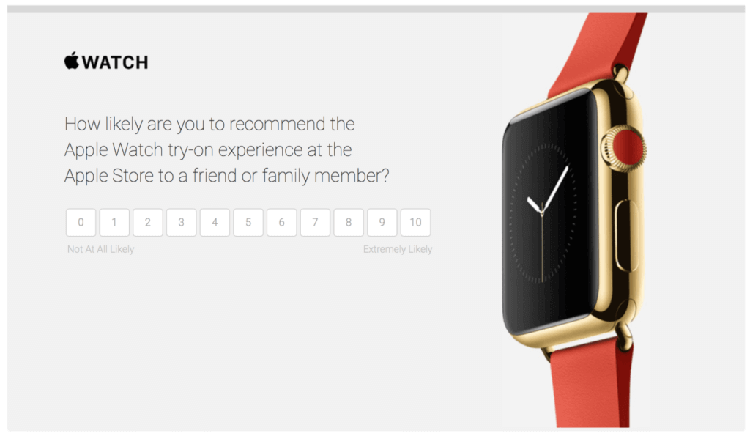
Do you want to integrate previous feedback that you received from customers? This may be needed to assess if an individual sentiment is shared by your entire customer base.
No matter what your goals are, it’s important to identify them early in the survey process so that each question has a distinct, measurable takeaway.
Take example from Liverpool ONE, a company that was hit hard by COVID-19, leveraged the power of surveys to create a better experience for returning shoppers.

2. Be Minimalistic and Specific
When it comes to your actual surveys, you should be as specific and pinpointed as possible. If you ask a barrage of scattershot questions, it’s going to water down the effectiveness of both the responses and your ability to generate actionable takeaways.
Specificity is a key to progress in business. It’s precisely how Netflix was able to avoid catastrophe and transform its business model to dominate the singular arena of streaming. If you want your surveys to be effective, they should always have a very specific focus behind each question and desired answer.
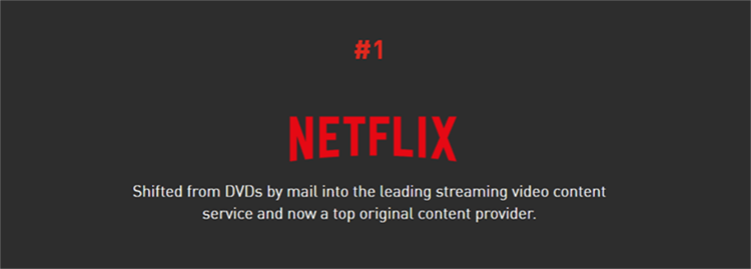
Additionally, each survey should have as few questions as possible. In the above example, Apple used a single rating scale of 1 to 10 to gauge customer satisfaction. They didn’t ask a string of unnecessary questions like what other colors they’d like to see for an Apple Watch or if the Apple stores should have bathrooms.
Every survey should be a frill-less affair with as little fluff as possible. Again, every question should be directly connected to a distinct goal or objective, and even then it should avoid any unnecessary wording or confusion within the question.
For example, the deli Zingerman’s once sent out an ideal survey in which they asked a single question: “How likely are you to recommend Zingerman’s Mail Order to a friend or colleague?” The answer was requested via a reply between 0 for “not a chance” and 10 for “in a heartbeat.” That’s it, apart from a couple of opening and closing sentences and a heartfelt sign off from every member of their small customer service crew. The survey was simple, easy to understand, and quick to answer.
Much like specificity, the concept of minimalism goes beyond just customer surveys, too, and into user experience (UX). For instance, Tinder found incredible success in the online dating market by boldly deciding to ditch asking customers questions and surveys. Instead, they opted to work with existing customer information on social media.
By avoiding the need to set up micro barriers in the form of unnecessary questions, Tinder was able to maximize the customer experience and siphon dissatisfied customers away from competitors like OkCupid and Match.com who still required a survey to participate.
Whether you’re considering Netflix’s intense focus, Zingerman’s single-question survey or Tinder’s lack of questions of any sort, minimalism and specificity have a clear track record, especially when it comes to interacting with customers. When applied to surveys, in particular, every survey question you ask must have a distinct purpose and be asked in the simplest format.
3. Consider Your Survey Delivery
The way that you deliver your survey can also significantly impact how well it performs and how you can or cannot analyze the data that it generates. A few common ways that you can deliver a survey include:
Social media: Social media is a powerful business tool that can enable networking, referrals, customer service, and many other interactions with customers. Southwest uses it to create an incredible response time via its business Twitter account. It can also be used as an excellent way to share surveys, especially if you have a significant audience in a younger demographic.
Email: Email lists are a great way to gather feedback from those who are either past customers or individuals interested enough in your business to opt into hearing news and updates. By using an email list, you can ask pinpointed questions and expect quality feedback from invested customers.
Mobile: Depending on the situation, you can call, text, or use a mobile app to provide a survey, once again typically to a highly valuable list of opt-in customers.
Shopping cart: You can ask for feedback during the checkout process, enabling you to request small snippets of information once a sale is complete and your customer is about to exit your site.
On your website : Shoppable quizzes are already used to help customers find products that match their interests, and companies have used a similar real-time, on-site approach to garner feedback from customers. This can be done by presenting relevant survey questions with a tool like Google Customer Survey right as visitors are using their website.
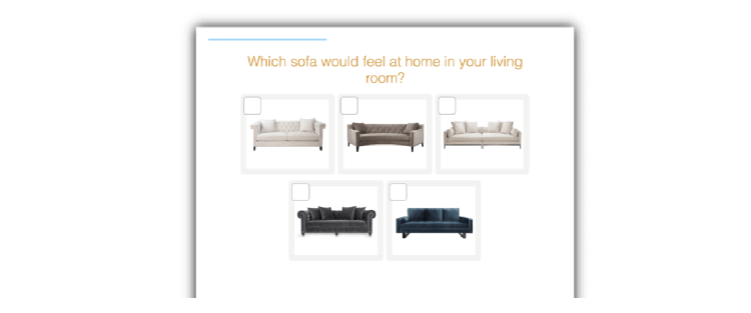
Not only can each of these be effective ways to provide a survey to a large body of individuals, but they can be used in concert together, as well. For instance, you may want to use social media to reach your younger audience. However, that may fail to reach anyone who doesn’t have steady internet access.
Until universal internet access becomes the norm, you may need to couple your social media channel with a more universal mobile option to ensure that you reach everyone that you need to with your questions.
If you do opt to do this, though, create a central location where you can gather all of your survey responses. You can do this in one of two ways:
By creating a single place, such as a spreadsheet, to input aggregate the responses from your various communication channels.
By using a cloud-based app like involve.me to give you a central place to host your survey that can be shared via a variety of different communication tools.
In either case, set up a system that will allow you to properly gather and analyze your responses. This will make it easier to understand the responses themselves and come to a definitive decision about what can and should be done.
4. Use Customer Surveys to Create Change
A survey can be a powerful tool for gathering customer feedback. However, even the most efficient and effective tools are irrelevant if they aren’t used intentionally.
If you decide to utilize surveys to help develop and improve your business — which, again, is highly recommended — then make sure to go about the process with purpose. Remove unnecessary fluff, only ask questions that matter, ask them in a streamlined and straightforward manner, and ensure that you have the best channels set up to reach your audience and receive their responses.
If you can set up a survey in this manner, you’ll be able to collect data that can quickly and easily be turned into meaningful information. This, in turn, can be used to guide your future decisions as you attempt to improve your business.

